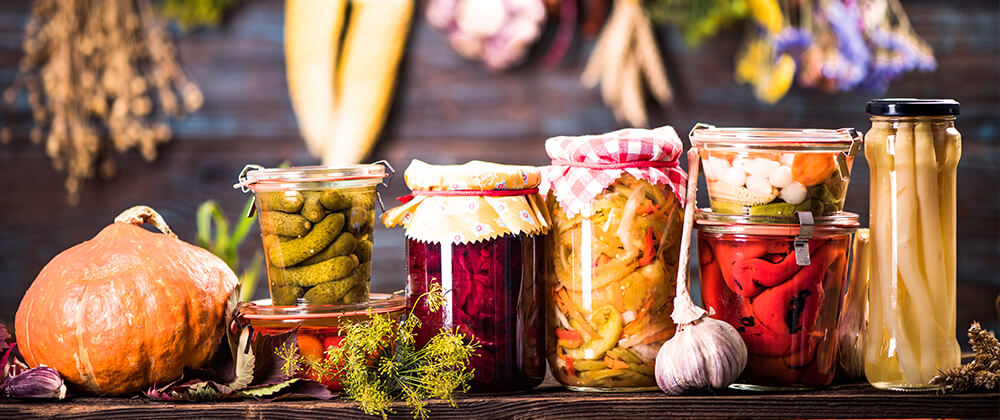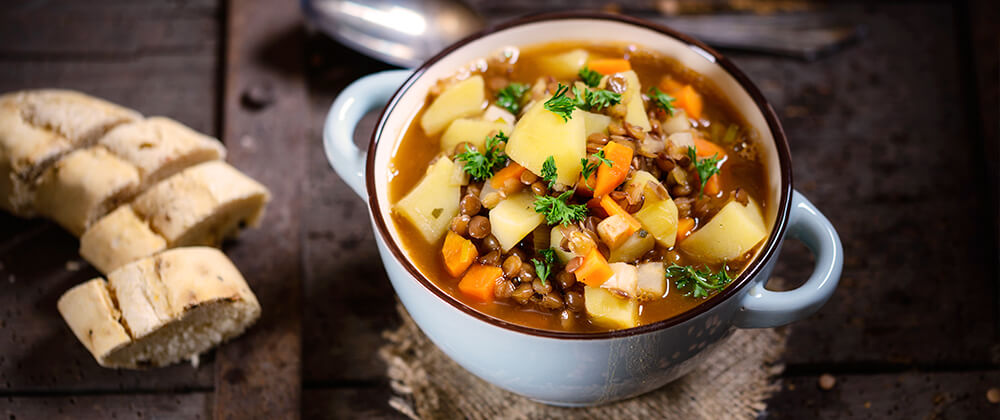Not long ago, storing your fall harvest was just as common as gardening. Today, most of us grew up with the wonders of modern refrigeration and take it for granted, but once you start growing your own food, there comes the point when you ask: what do I do with all of this produce? Or better yet—how do I preserve some of this goodness so I can continue to enjoy it all winter? You’re not the first one faced with this question. It turns out there are many ways to make the harvest last!
Keep Them in a Root Cellar, or Something Similar
Root cellars are commonly used for storing vegetables over the winter. Any place in your house that remains cool but above freezing—like an unheated section of the basement or garage, a crawl space under the porch, or an unheated attic or entryway—can double as a root cellar. Many vegetables can be stored there almost as they are, including onions, garlic, winter squash, and pumpkins. While the specific care for each vegetable varies, in general you want to brush off excess soil and cure them in a warm, dry place for about 2 weeks, allowing the skin to harden before putting them in cold storage.
Even though the vegetables are out of the ground, they’re still respiring moisture. So if you have room, it’s best to store them so they’re not touching each other. This gives any moisture a chance to evaporate. Another rule of thumb is to only store mature vegetables that have no bruises or signs of decay.
Store Them in Sand
The life of root vegetables like carrots, beets, parsnips, and rutabagas can be extended by storing them in sand in a cool place. A five-gallon bucket works perfectly for this. Remember not to wash them before storage. Simply brush away excess soil, cut off the stems to ½ inch, and dry them in the sun for a day or two. Then, begin by layering a few inches of clean sand at the bottom of a bucket. Lay one layer of vegetables and cover them with another layer of sand. Repeat the process until the bucket is full. To let moisture escape, place the lid on top but don’t seal it down. If you keep these buckets in temperatures of 32-40°F in any root-cellar-like place, the veggies should last all the way until spring. But check on them periodically to make sure they’re not spoiling.
Can Them
Though daunting to the uninitiated, canning is a straightforward process if you have the proper jars, lids, and pot. The rewards of canning include homemade jam, tomato sauce, and pickles, but you can just as easily preserve beets, carrots, greens, and many other vegetables. Processing your fall harvest into jars takes time, but once the jars are airtight, they can easily last all winter and well beyond it.
Ferment Them
Fermenting is an ancient way of preserving the fall harvest. Instead of boiling jars until they’re air airtight, you preserve the vegetables in a salt brine. A particular ratio of salt encourages the growth of a healthy bacteria culture that slowly sours the veggies. The end result may be sauerkraut, kimchi, pickles, or any number of pickled beets, carrots, green beans, cauliflower, and others. Once they’re fermented, you don’t have to boil them or seal them, but simply slow the fermentation process by placing them in a root cellar or fridge.
The best part of this method is that eating the ferments adds good bacteria to your own digestive tract. Cutting edge health science has recently rediscovered how this bacteria is not only essential to our digestion but to our overall health. If you do try fermenting, make sure to follow proper protocols to ensure your products are free of any mold and harmful bacteria.
Dry Them
Drying is another simple way to add a healthy dose of garden vegetables to your winter diet. It’s especially useful if you have an overabundance of greens and fruit. You don’t necessarily need a dehydrator, but can just as easily use the oven at a very low heat, typically the lowest possible, around 150°F. The idea here is not to cook them but desiccate them until they’re completely free of moisture. Once dry, you can store them for months and add them to soups, stews, porridge, or cereal as you see fit.
Freeze Them
At the end of the day, freezing remains one of the easiest methods to preserve the autumn harvest. Believe it or not, you can actually freeze hardy greens like kale and collards without any preparation. Just place them in a freezer bag, and they remain firm for months. With many other vegetables, you have to cook them first. This necessity has inspired many soup cooking marathons and pasta sauce extravaganzas. Yes, the cooking takes time, but in one fell swoop, you can make squash soup to last for the next half-year.
Hearty Fall Vegetable Stew
Okay, maybe you could see where this was going! If you’re going to freeze some of your produce, or just enjoy it with the family, here is one recipe that uses many of those hearty veggies all at once! The preparation time is 60 minutes, and the recipe serves 4.
Ingredients
- 2 tbsp olive oil
- 1/2 onion, diced
- 1 celery stalk, diced
- 1 1/2 tsp garlic, minced
- 2 potatoes, diced
- 1 cup of acorn squash, peeled and diced
- 4 cups vegetable broth
- 1 can (15 ounces) chickpeas, rinsed and drained
- 1 can (15 ounces) crushed tomatoes
- 1/2 cup dried red lentils, rinsed and drained
- 1 bay leaf
- 1/2 tbsp fresh rosemary, minced
- 1 tsp fresh thyme, minced
- 1 cup kale, stems removed and chopped
- Salt and pepper to taste
Instructions
- Saute onion, garlic, and celery in olive oil until onions are translucent—roughly 3-5 minutes.
- Add lentils, vegetable broth, and tomatoes, and bring to a boil. Stir to combine, lower the heat to a simmer, and cover the pot to cook for 20 minutes, stirring occasionally.
- Add chickpeas, squash, potatoes, bay leaf, rosemary, and thyme. Cover and continue to cook for another 15 minutes.
- Add kale and cook for 5 minutes. Season with salt and pepper and enjoy.
Eat Them
When storing vegetables, remember the ultimate goal is to eat them. The sooner you enjoy them, the better, as you diminish the risk of rotting and get to taste them when they are fresher. If you have more questions about your fall harvest, feel free to contact our garden center in the Quad Cities!







